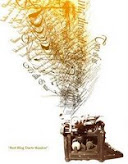Ribera lived in Rome until about 1616. There, he studied the work of great painters of the time. This was the end of the Renaissance and there were great painters everywhere.
Finally, Ribera moved to the Kingdom of Naples. Today, Naples is a port city on the south-western coast of Italy. In Ribera’s time, Naples and the towns around it made up the Kingdom of Naples and was ruled by Spain. Ribera made an impression on the Spanish Viceroy, or ruler, of the Kingdom of Naples, and the man bought some of Ribera’s paintings.
In 1647 and 1648, when Ribera was sick and the people of Naples were rebelling against Spanish rule, the Viceroy even let Ribera stay at the palace. Ribera died in 1652.

Ribera’s paintings were extremely realistic. He wanted to paint the world the way it really was and that included the bad things. He especially liked to paint people in pain. Ribera was very good at showing pain of the faces of his subjects. Look at the painting above, The Deliverance of St. Peter.
 In his early paintings, Ribera used a strong contrast between light and dark to create murky looking paintings. The painting above, Jerome Hears the Trumpet, is one example. Around 1630, Ribera moved away from this. He began to create paintings that seemed to glow with dim light. An example of this is Saint Francis of Assisi, shown below.
In his early paintings, Ribera used a strong contrast between light and dark to create murky looking paintings. The painting above, Jerome Hears the Trumpet, is one example. Around 1630, Ribera moved away from this. He began to create paintings that seemed to glow with dim light. An example of this is Saint Francis of Assisi, shown below. Check back tomorrow for another Spanish painter.
Check back tomorrow for another Spanish painter.Return to main page.








No comments:
Post a Comment